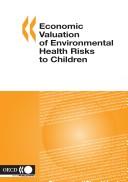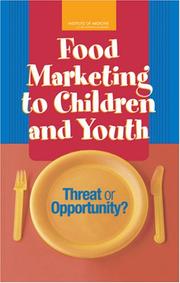| Listing 1 - 3 of 3 |
Sort by
|

ISBN: 0335216501 1280951419 0335224989 033521651X 9780335224982 9780335216512 9780335216505 9781280951411 Year: 2007 Publisher: Maidenhead : McGraw-Hill Education,
Abstract | Keywords | Export | Availability | Bookmark
 Loading...
Loading...Choose an application
- Reference Manager
- EndNote
- RefWorks (Direct export to RefWorks)
This book focuses on doing ethical research with children in today's climate of increased globalization, surveillance and awareness of children as competent research participants. It covers a range of conceptual, methodological and procedural issues, and provides a framework for doing ethical research with children. Written by international experts in the fields of early childhood research and ethics, this book supports students, practitioner-researchers and research gatekeepers with resources on how to conduct and evaluate ethical research with children. The contributors:. Use key examples of
Children. --- Medical ethics. --- Pediatrics. --- Children --- Research --- Child & Youth Development --- Social Welfare & Social Work --- Social Sciences --- Research ethics --- Child research --- Moral and ethical aspects --- E-books

ISBN: 1280606649 9786610606641 9264013989 9264013970 Year: 2006 Publisher: Paris : OECD Publishing,
Abstract | Keywords | Export | Availability | Bookmark
 Loading...
Loading...Choose an application
- Reference Manager
- EndNote
- RefWorks (Direct export to RefWorks)
The relationship between environment and children’s health has been the subject of increasing interest these last ten years. For example, many OECD member countries are reporting asthma epidemics exacerbated by air pollution: in the United States nearly 1 in 13 school-age children (approximately 4.8 million) has asthma, and the rate is increasing more rapidly in school-age children than in any other group. The importance of this issue has resulted in a growing number of epidemiological studies aiming at better understanding and better characterising the relationship between environmental pollution and the health of children. However, in many respects, the valuation of children’s health strongly differs from the valuation of adults’ health and constitutes a real challenge for analysts as well as for decision-makers. Consequently, this book proposes an in depth analysis of the main methodological difficulties associated with estimating the social value of a reduction in risk to children. Questions such as how to elicit children’s preferences, what valuation methodology and benefit measure to choose, how to discount benefits to children’s health, and how to account for economic uncertainties in this specific context of economic valuation will be systematically examined in order to define key policy implications and to pave the way for further research.
Environmental health -- Economic aspects. --- Environmental risk assessment -- Economic aspects. --- Environmental risk assessment. --- Environmentally induced diseases in children -- Economic aspects. --- Environmentally induced diseases in children. --- Health risk assessment -- Economic aspects. --- Risk assessment -- Economic aspects. --- Environmentally induced diseases in children --- Environmental health --- Health Occupations --- Environmental Pollution --- Age Groups --- Disorders of Environmental Origin --- Hypersensitivity --- Persons --- Immune System Diseases --- Public Health --- Disciplines and Occupations --- Diseases --- Environment and Public Health --- Named Groups --- Health Care --- Environmental Illness --- Environmental Exposure --- Child --- Environmental Health --- Medicine --- Health & Biological Sciences --- Pediatrics --- Economic aspects --- Economic aspects. --- Environmental quality --- Health --- Health ecology --- Health aspects --- Environmental aspects --- Public health --- Environmental engineering --- Health risk assessment --- Children --- 2.

ISBN: 0309097134 9786610447305 1280447303 030955229X 9781280447303 9780309552295 0309100895 9780309097130 Year: 2006 Publisher: Washington, DC : National Academies Press,
Abstract | Keywords | Export | Availability | Bookmark
 Loading...
Loading...Choose an application
- Reference Manager
- EndNote
- RefWorks (Direct export to RefWorks)
Annotation Creating an environment in which children in the United States grow up healthy should be a high priority for the nation. Yet the prevailing pattern of food and beverage marketing to children in America represents, at best, a missed opportunity, and at worst, a direct threat to the health prospects of the next generation. Children's dietary and related health patterns are shaped by the interplay of many factors-their biologic affinities, their culture and values, their economic status, their physical and social environments, and their commercial media environments-all of which, apart from their genetic predispositions, have undergone significant transformations during the past three decades. Among these environments, none have more rapidly assumed central socializing roles among children and youth than the media. With the growth in the variety and the penetration of the media have come a parallel growth with their use for marketing, including the marketing of food and beverage products. What impact has food and beverage marketing had on the dietary patterns and health status of American children? The answer to this question has the potential to shape a generation and is the focus of Food Marketing to Children and Youth. This book will be of interest to parents, federal and state government agencies, educators and schools, health care professionals, industry companies, industry trade groups, media, and those involved in community and consumer advocacy.
Children --- Youth --- Food industry and trade --- Target marketing --- Health promotion --- Nutrition policy --- Child consumers --- Investigative Techniques --- Social Control Policies --- Nutritional Physiological Phenomena --- Feeding Behavior --- Age Groups --- Communication --- Food and Beverages --- Marketing --- Habits --- Persons --- Policy --- Commerce --- Behavior --- Physiological Phenomena --- Technology, Industry, Agriculture --- Analytical, Diagnostic and Therapeutic Techniques and Equipment --- Information Science --- Social Control, Formal --- Phenomena and Processes --- Behavior and Behavior Mechanisms --- Social Sciences --- Sociology --- Named Groups --- Technology, Industry, and Agriculture --- Health Care Economics and Organizations --- Psychiatry and Psychology --- Anthropology, Education, Sociology and Social Phenomena --- Health Care --- Advertising as Topic --- Food Habits --- Adolescent --- Child --- Diet --- Public Policy --- Food --- Medicine --- Health & Biological Sciences --- Pediatrics --- Nutrition --- Food industry and trade. --- Target marketing. --- Health promotion. --- Nutrition policy. --- Child consumers. --- Nutrition. --- Food preparation industry --- Food processing industry --- Food trade --- Child nutrition --- Pediatric nutrition --- Children as consumers --- Food policy --- Nutrition and state --- State and nutrition --- Health promotion programs --- Health promotion services --- Promotion of health --- Wellness programs --- Market targeting --- Target markets --- Government policy --- Agricultural processing industries --- Processed foods --- Pediatric nutritionists --- Consumers --- Social policy --- Preventive health services --- Health education --- Food processing --- Food technology --- Processing --- Obesity in children --- Child health services --- Prevention --- E-books --- Affirmative Action --- Migration Policy --- Population Policy --- Social Protection --- Social Policy --- Action, Affirmative --- Migration Policies --- Policies, Migration --- Policies, Population --- Policies, Public --- Policies, Social --- Policy, Migration --- Policy, Population --- Policy, Public --- Policy, Social --- Population Policies --- Protection, Social --- Public Policies --- Social Policies --- Policy Making --- Diet Habits --- Eating Habits --- Dietary Habits --- Eating Behavior --- Feeding Patterns --- Behavior, Eating --- Behavior, Feeding --- Behaviors, Eating --- Behaviors, Feeding --- Diet Habit --- Dietary Habit --- Eating Behaviors --- Eating Habit --- Feeding Behaviors --- Feeding Pattern --- Food Habit --- Habit, Diet --- Habit, Dietary --- Habit, Eating --- Habit, Food --- Habits, Diet --- Habits, Dietary --- Habits, Eating --- Habits, Food --- Pattern, Feeding --- Patterns, Feeding --- Nutrition Disorders --- Diets --- Minors --- Advertisement as Topic --- Telemarketing --- Advertisings --- Adolescents --- Adolescents, Female --- Adolescents, Male --- Teenagers --- Teens --- Adolescence --- Adolescent, Female --- Adolescent, Male --- Female Adolescent --- Female Adolescents --- Male Adolescent --- Male Adolescents --- Teen --- Teenager --- Youths --- Foods --- Nutritional Requirements --- Childhood obesity --- Corpulence in children --- Metabolic disorders in children --- Nutrition disorders in children --- Feeding-Related Behavior --- Behavior, Feeding-Related --- Feeding Related Behavior --- Feeding-Related Behaviors
| Listing 1 - 3 of 3 |
Sort by
|

 Search
Search Feedback
Feedback About
About Help
Help News
News